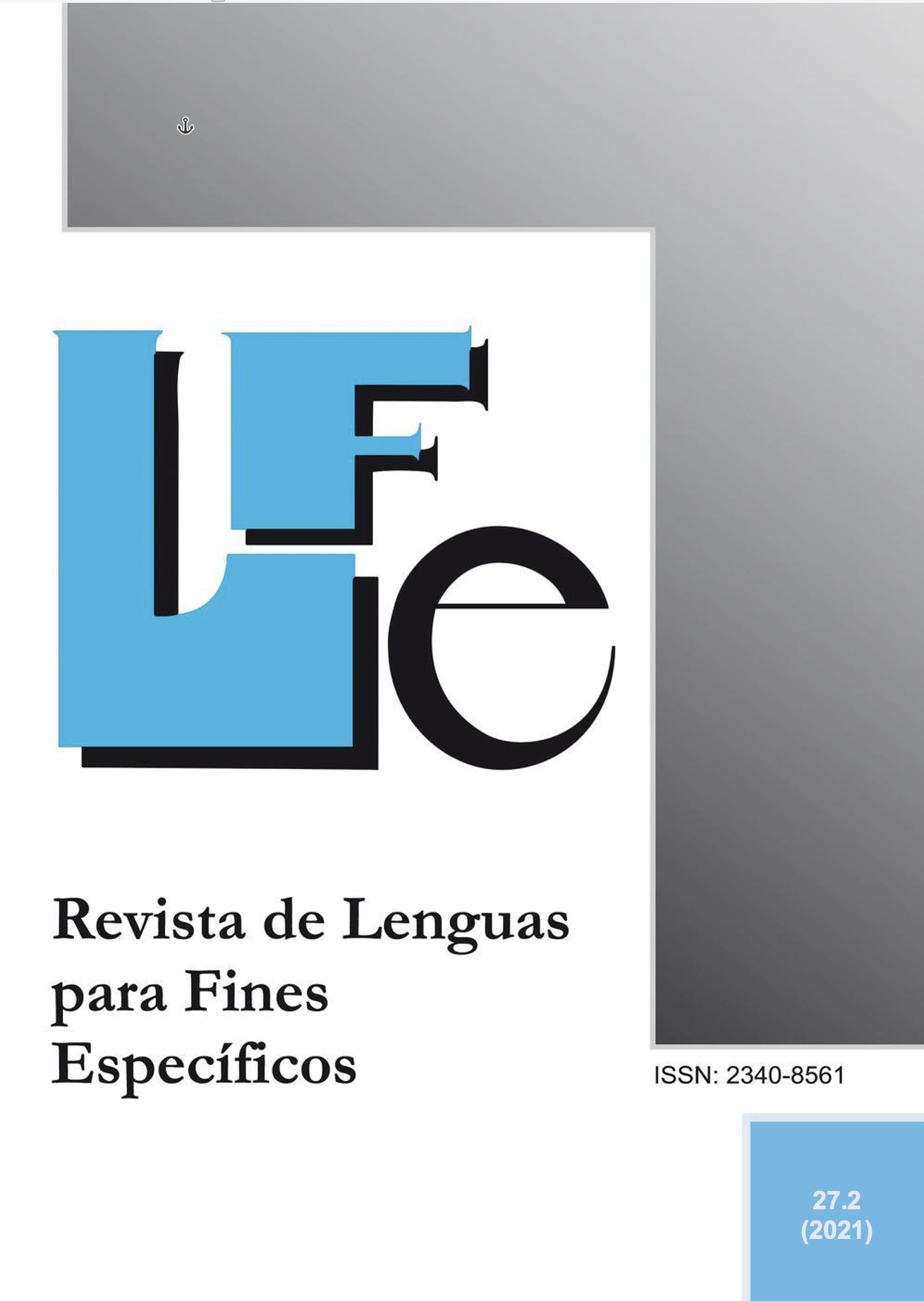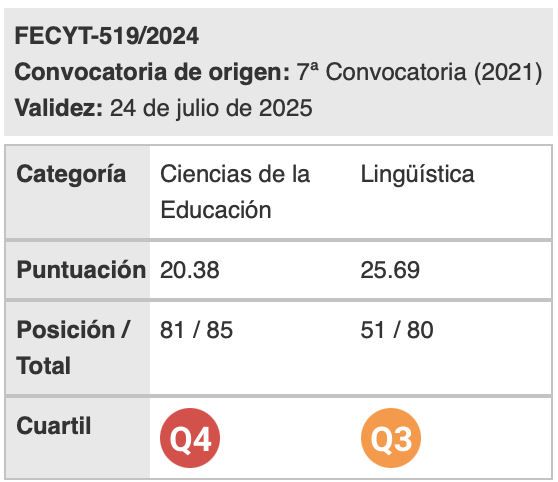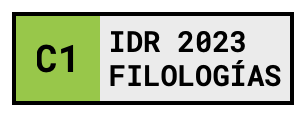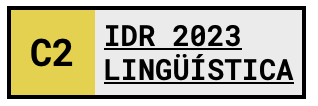The representativeness threshold for the CETA subcorpus of the Coruña Corpus
Palabras clave:
representativeness, ReCor, specialized Corpus, Zipf's Law, N-gram, Coruña Corpus, CETA, astronomyResumen
The concept of representativeness is the main distinguishing characteristic of specialised corpora in comparison to other sets of texts. The Coruña Corpus of English Scientific Writing currently comprises four published subcorpora (astronomy, life sciences, history, and philosophy) plus three others under compilation (physics, chemistry and linguistics). In this paper we aim to assess the lexical density of the text samples in CETA, the Corpus of English Texts on Astronomy, by means of the ReCor tool, a posteriori. The study is motivated by the following question: does quantitative representativeness analysis using ReCor provide, in the form of a cross-check, further validation of previous research on the representativeness of CETA? Previous work (Crespo and Moskowich, 2010) has indicated that the CETA corpus is well designed and valid for the purposes for which it was intended. We will here suggest metrics to measure these findings. The most important contribution of this study is to offer quantitative data collection results using the ReCor tool, which allows data triangulation and consequently ensures overall data quality. Results show that data analysis with the ReCor tool supports previous findings, and thus we are able to verify that CETA is indeed representative of the language of its time and register.
Descargas
Citas
Biber, D. (1993). “Using Registered-diversified Corpora of General Language Studies”. Computational Linguistics, 19 (2), 219-241.
Biber, D., Conrad, S. & Reppen, R. (1998a). Preface. In: D. BIBER, S. Conrad & R. Reppen (eds.), Corpus Linguistics: Investigating Language Structure and Use (pp. ix-x). Cambridge: Cambridge University Press.
Biber, D., Conrad, S. & Reppen, R. (1998b). Introduction Goals and Methods of the Corpus-based Approach. In: D. Biber, S. Conrad & R. Reppen (eds.), Corpus Linguistics: Investigating Language Structure and Use (pp. 1-18). Cambridge: Cambridge University Press.
Booth, A. D. (1967). “A Law of Occurrences for Words of Low Frequency”. Information and Control, 10 (4), 386-393.
Corpas, G. y Seghiri, M. (2010). “Size Matters: A Quantitative Approach to Corpus Representativeness”. In R. Rabadán, (ed.) Lengua, traducción, recepción. En honor de Julio César Santoyo (pp. 112-146). Secretar: Universidad de Alicante.
Crespo, B. & Moskowich-Spiegel, I. (2010). “CETA in the Context of the Coruña Corpus”. Literary and Linguistic Computing, 25(2), 153-164.
Francis, W. N. (1982). Problems of Assembling and Computerizing Large Corpora. In S. Johansson (ed.) et al. Computer Corpora in English Language Research (pp. 7-24). Norway: Norwegian Computing Centre for the Humanities
Moskowich-Spiegel, I., Lareo, I., Camiña, G. & Crespo, B. (comps.) (2012). Corpus of English Texts on Astronomy. Amsterdam: John Benjamins.
Moskowich-Spiegel, I. (2011). “The Golden Rule of Divine Philosophy: Exemplified in the Coruña Corpus of English Scientific Writing”. Revista de Lenguas para Fines Específicos, 17, 167-197.
Moskowich, I. & Crespo García, B. (eds.) (2012). Astronomy ‘playne and simple’: The Writing of Science between 1700 and 1900. Amsterdam: John Benjamins
Moyotl-Hernández, E. & Macías-Pérez, M. (2016). “Método para autocompletar consultas basado en cadenas de Markov y la ley de Zipf”. Research in Computing Science, 115, 157-170.
Parapar, J. & Moskowich-Spiegel, I. (2007). “The Coruña Corpus Tool”. Revista de Procesamiento del Lenguaje Natural 39, 289–290.
Sidorov, G. (2013). “N-gramas sintácticos no-continuos”. Polibits, 48, 69-78.
Seghiri, M. (2011). “Metodología protocolizada de compilación de un corpus de seguros de viajes: aspectos de diseño y representatividad”. Revista de Lingüística teórica y Aplicada 49 (2), 13-30.
Seghiri, M. (2014). “Too Big or not too Big: Establishing the Minimum Size for a Legal ad hoc Corpus”. Hermes: Journal of Language and Communication in Business 27 (53), 85-98.
Seghiri, M. (2015). Determinación de la representatividad cuantitativa de un corpus ad hoc bilingüe (inglés-español) de manuales de instrucciones generales de lectores electrónicos. In M. T. Sánchez (ed.), Corpus-based Translation and Interpreting Studies: From description to application (125- 146). Frankfurt: Frank & Timme.
Sinclair, J. (1991). Glossary. In: J. Sinclair (ed.) Corpus, Concordance, Collocation (pp. 169-176). Oxford: Oxford University Press.
Torruella, J. & Llisterri, J. (1999). Diseño de corpus textuales y orales. In: J. M. Blecua (ed.) et al. Filología e informática. Nuevas tecnologías en los estudios filológicos (pp. 45-77). Barcelona: Universidad Autónoma de Barcelona.
Descargas
Publicado
Cómo citar
Número
Sección
Licencia
Aquellos autores/as que tengan publicaciones con esta revista, aceptan los términos siguientes:
- Los autores/as conservarán sus derechos de autor y garantizarán a la revista el derecho de primera publicación de su obra, el cuál estará simultáneamente sujeto a la Licencia de reconocimiento de Creative Commons que permite a terceros compartir la obra siempre que se indique su autor y su primera publicación esta revista.
- Los autores/as podrán adoptar otros acuerdos de licencia no exclusiva de distribución de la versión de la obra publicada (p. ej.: depositarla en un archivo telemático institucional o publicarla en un volumen monográfico) siempre que se indique la publicación inicial en esta revista.
- Se permite y recomienda a los autores/as difundir su obra a través de Internet (p. ej.: en archivos telemáticos institucionales o en su página web) antes y durante el proceso de envío, lo cual puede producir intercambios interesantes y aumentar las citas de la obra publicada. (Véase El efecto del acceso abierto).

Revista de Lenguas para fines específicos is licensed under a Creative Commons Reconocimiento-NoComercial-SinObraDerivada 4.0 Internacional License.























